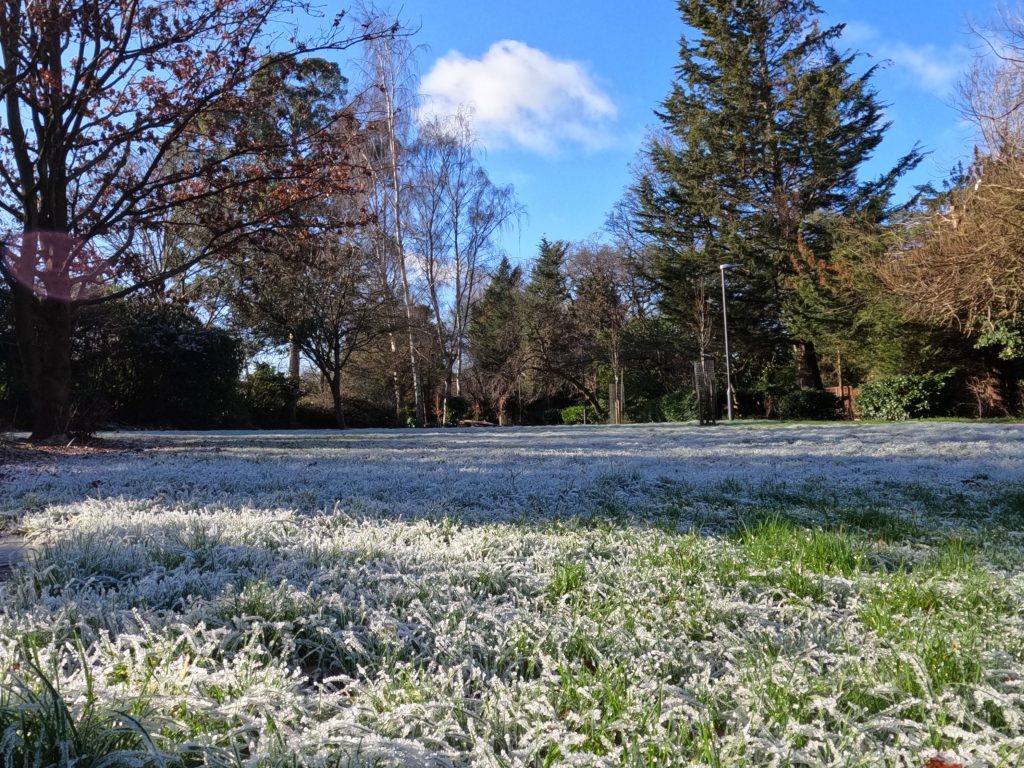Trees
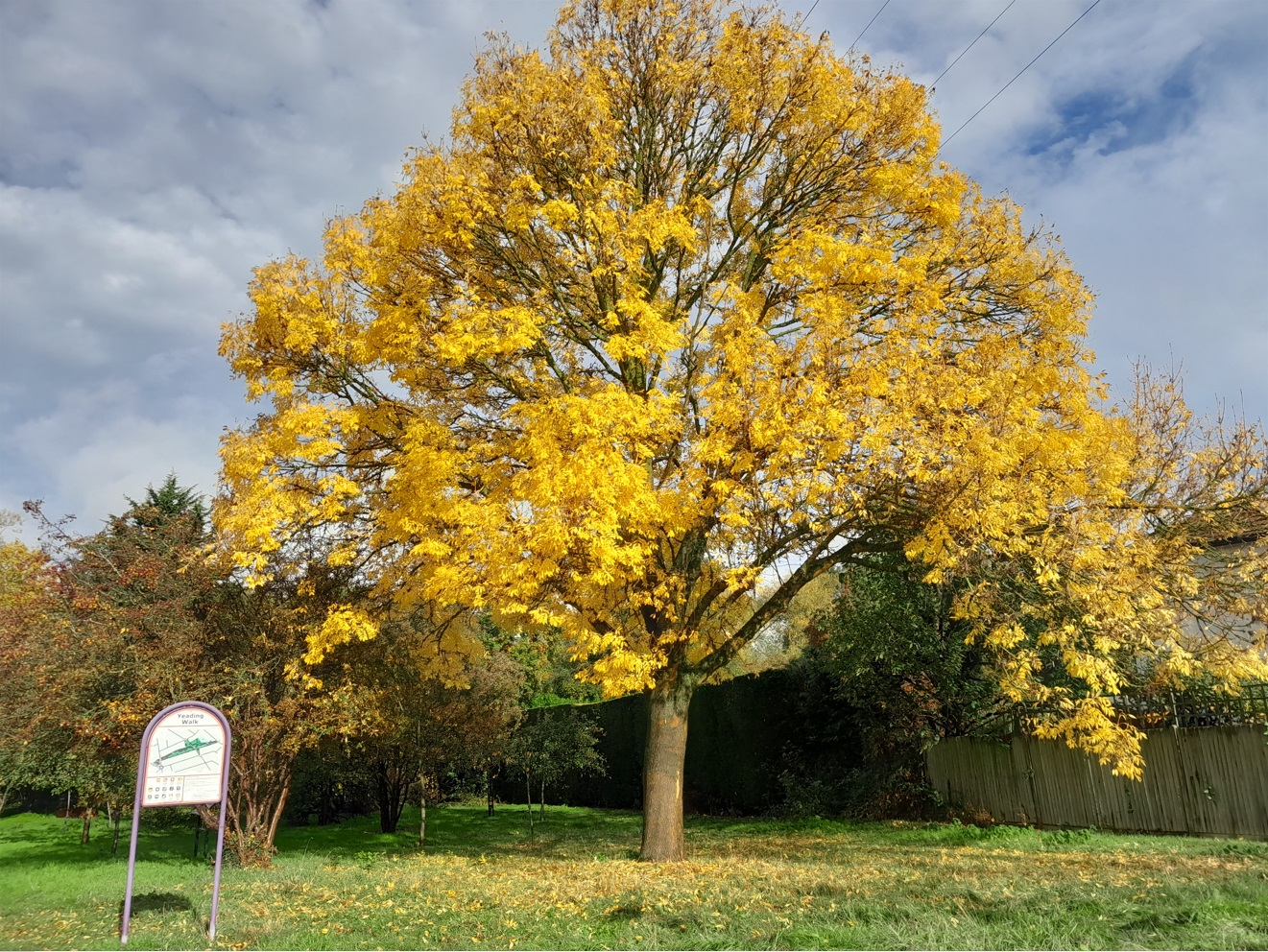
Yeading Walk has a variety of native trees including oak, black poplar, sycamore, crack and weeping willow, hazel, silver birch, maple, horse chestnut, holly, yew and hornbeam. There are also a number of – non native – ornamental trees. Also an orchard, of mainly apple trees, is found by the Suffolk road entrance.
The trees give the park much of its special feeling of being in a hidden away space. They bring a high backdrop to the park balanced and enhanced by the lower shrubs and lawn areas.
The larger oak trees were on boundaries prior to North Harrow being built and crack willows have been growing along the brook for many years.
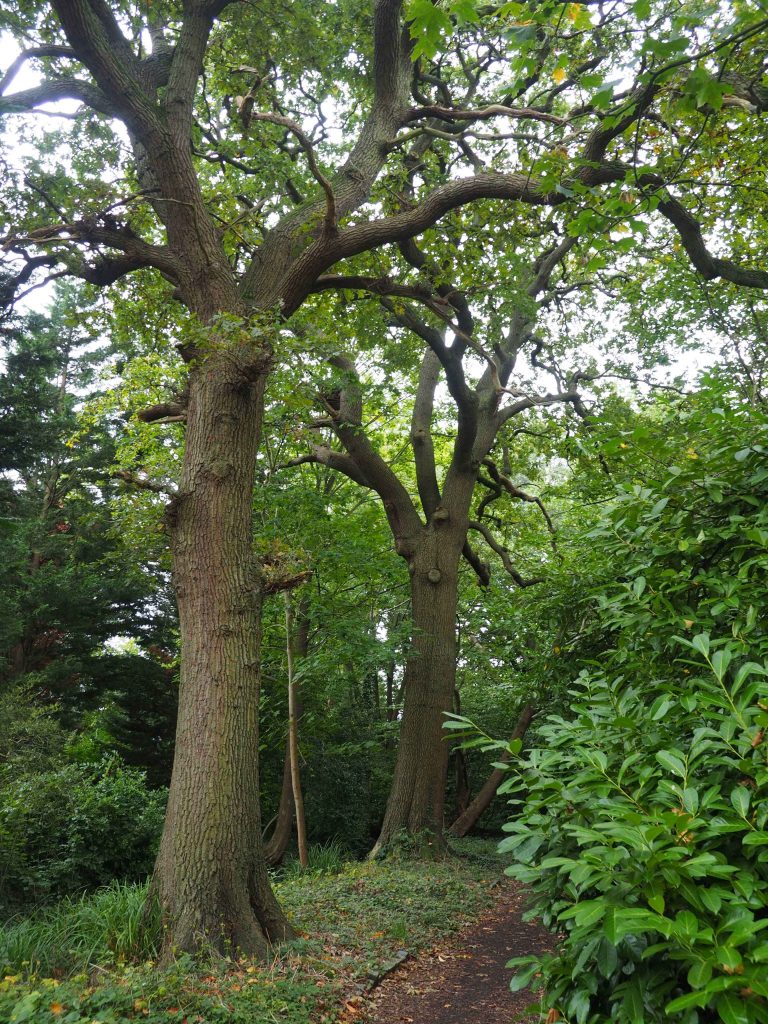
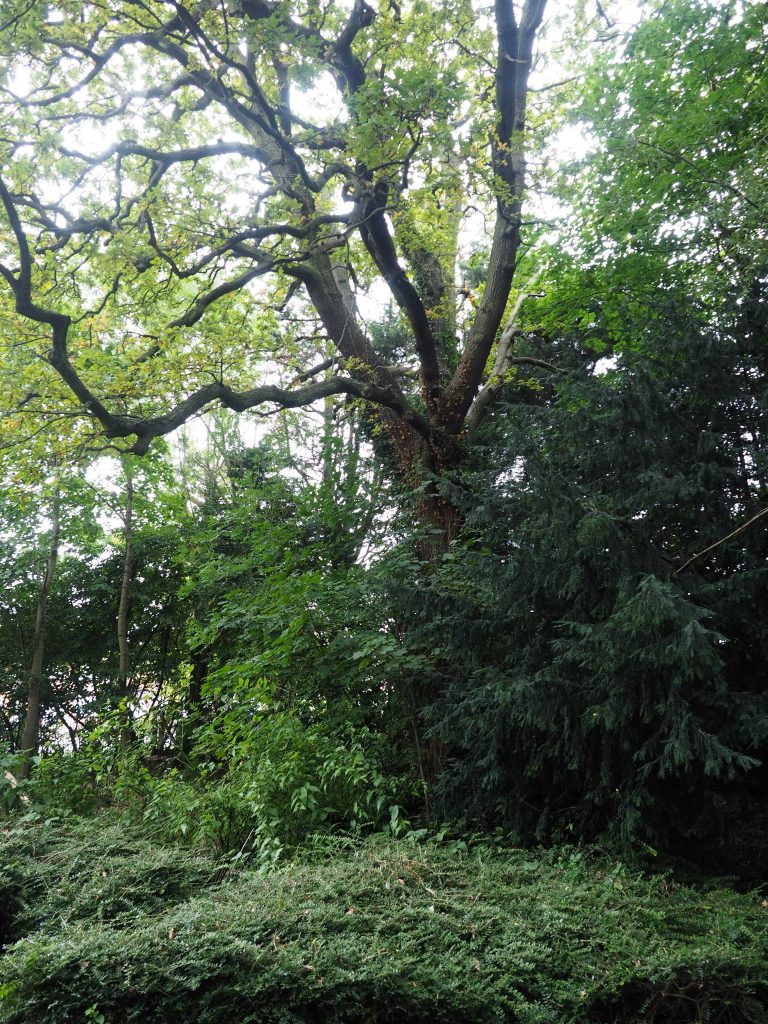
We have suffered the loss of some trees in the past few years. The huge Black poplars, near the Northumberland road entrance, had – due to age – been attacked by a fungus and needed reducing. Other trees have been knocked over with the named storms that have passed in recent years.
Where spaces have been formed we have in one location begun planting a hedgerow and some specimen silver birch and in others spaces planted replacement trees. These replacement trees and hedgerow will take a couple of decades to mature and become replacements to what has been lost but as they say, the best time to plant a tree is twenty years ago; the second best time is today.
The Friends begun a programme of planting new trees with a grove of Golden Alders and ornamental pears near the Rayners Lane Entrance which were planted at the end of 2022. We also obtained funding for the planting of three native trees in the shady walk area of the park to replace those lost to Storm Eunice; Bird Cherry, Field Maple and Hornbeam.
In 2024 we have planted three trees, a sweet chestnut, a beech and a lime, along the Suffolk Road boundary that are planned to give us some future ‘big’ trees. These should be nicely mature in about 300 years! Three spring blossoming crab apple trees have also been added to the orchard area.
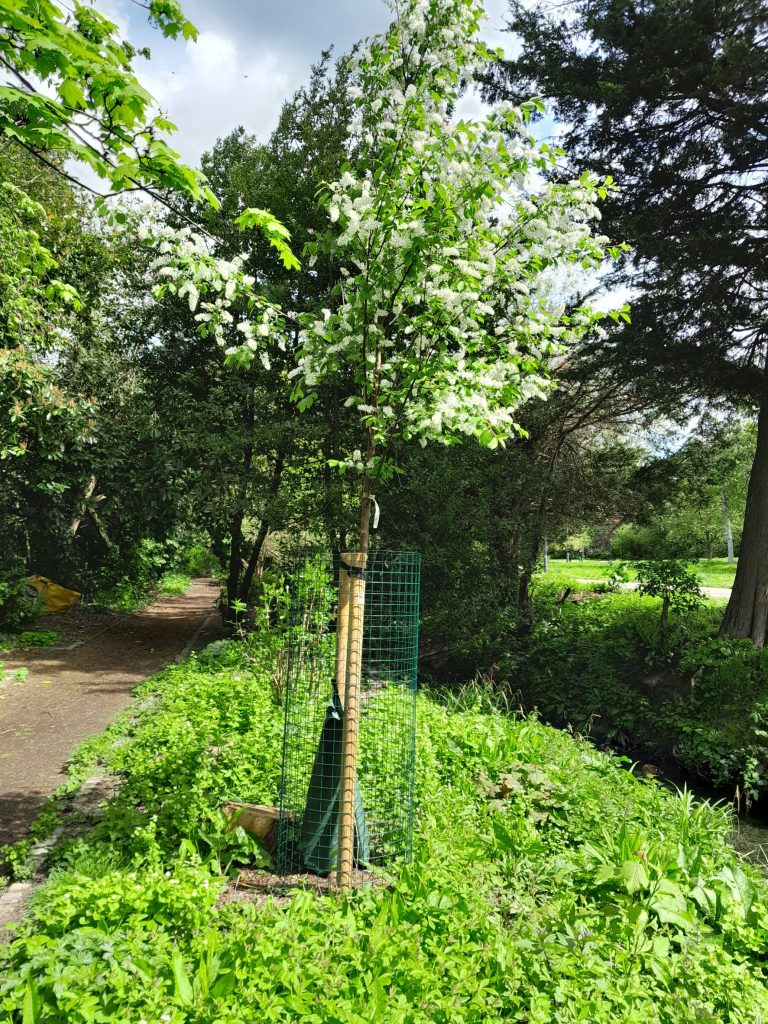
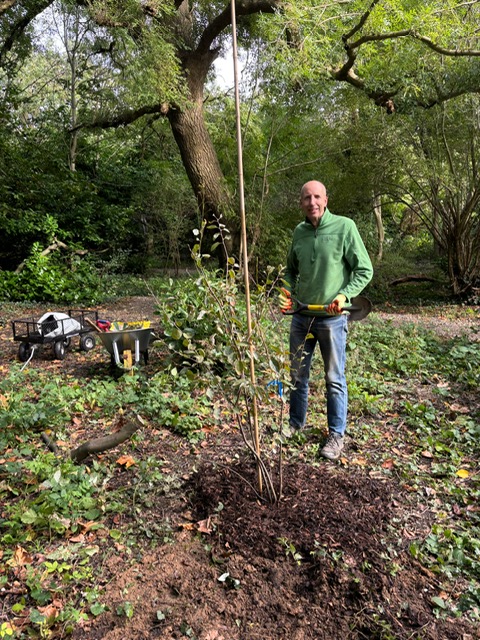
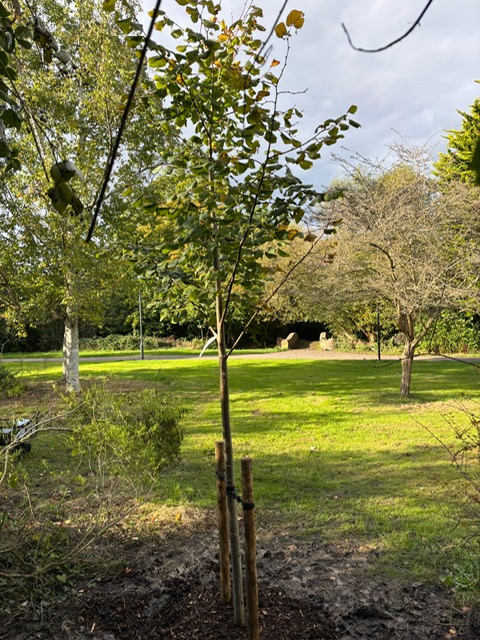
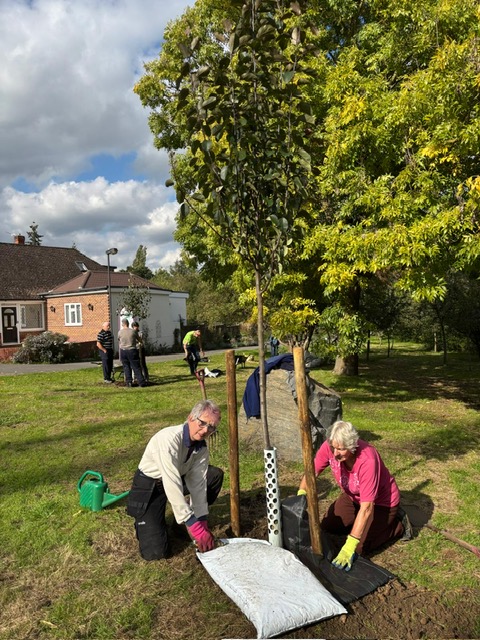
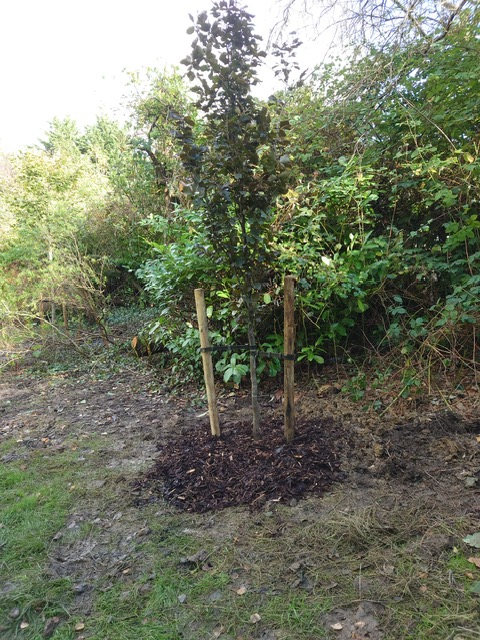
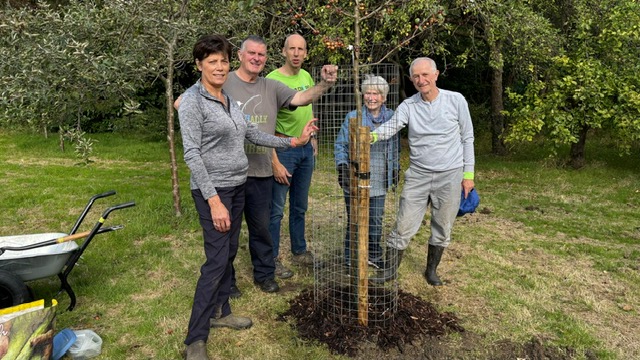
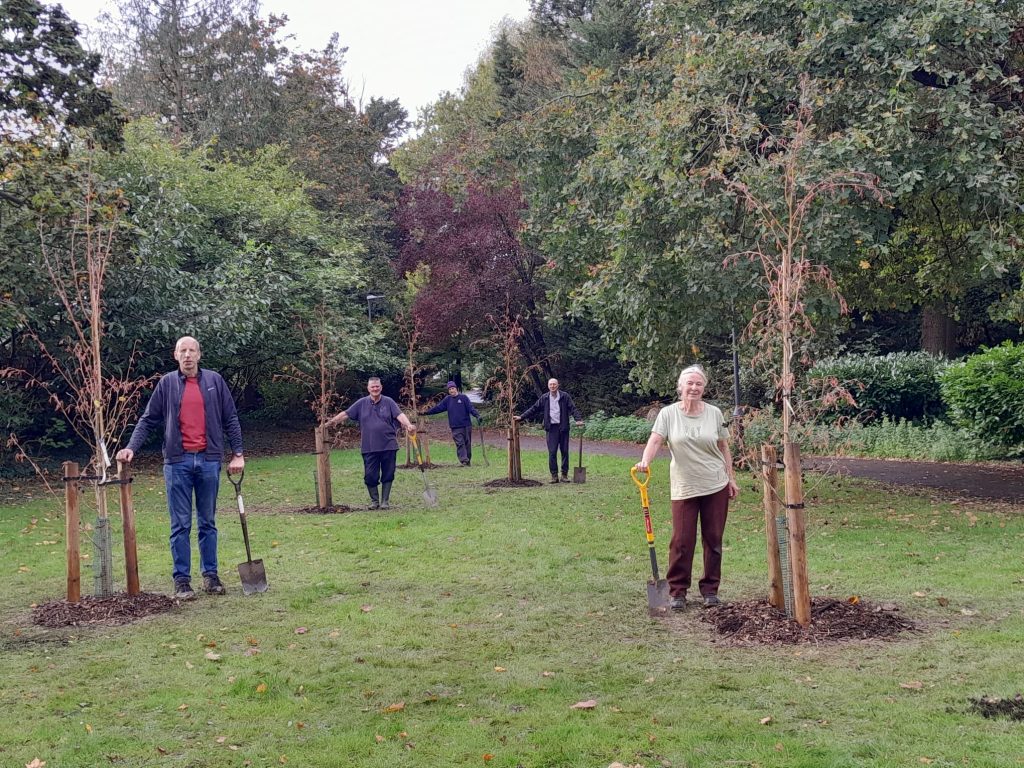
Future plans for trees in Yeading Walk:
A few trees around the park seemed to have struggled with the dry spell in 2023 and are all but dead. Some will be left to give habitat to many creatures and some will be replaced.
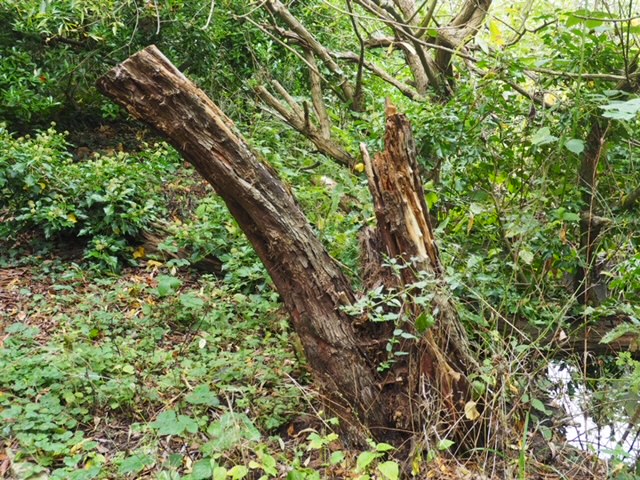
In the nature walk one large cherry laurel was removed in 2023. This left an area with no plants, due to the way the laurel suppresses any other plants to grow – and the reason we removed it. This area is starting to grow saplings of sycamore and ash and the improved daylight is allowing the existing trees to grow leaves into the area that the laurel had taken up.
The Nature walk, beyond the stepping stones, was part of the allotments forty years ago. This was set aside to be a nature reserve but it has not been managed since its original layout. This was planted up with a hedgerow mix around the outside of the area and a pond in the middle but in the intervening years several ash have grown from saplings into mature trees, bramble has taken hold and the pond gone. This shows what the park could become if we locked the gates and left it for a few years. This may sound attractive to a few people but the the park’s biodiversity would suffer. Nature Conservation requires management of some of the plants to allow others to have a chance. More variety of plants leads to more insects which leads to more birds, bats and other animals. Trees are just one of many plants. Space is required for other plants if we are to greatly improve biodiversity.
Walk and Talk Event June 2024
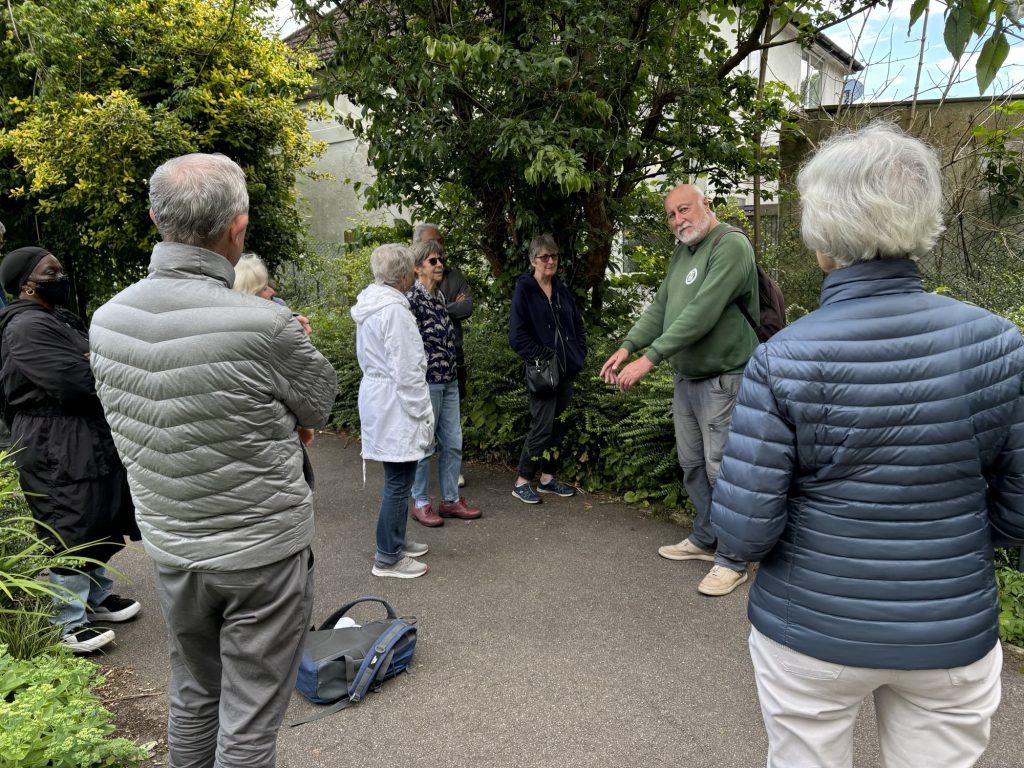
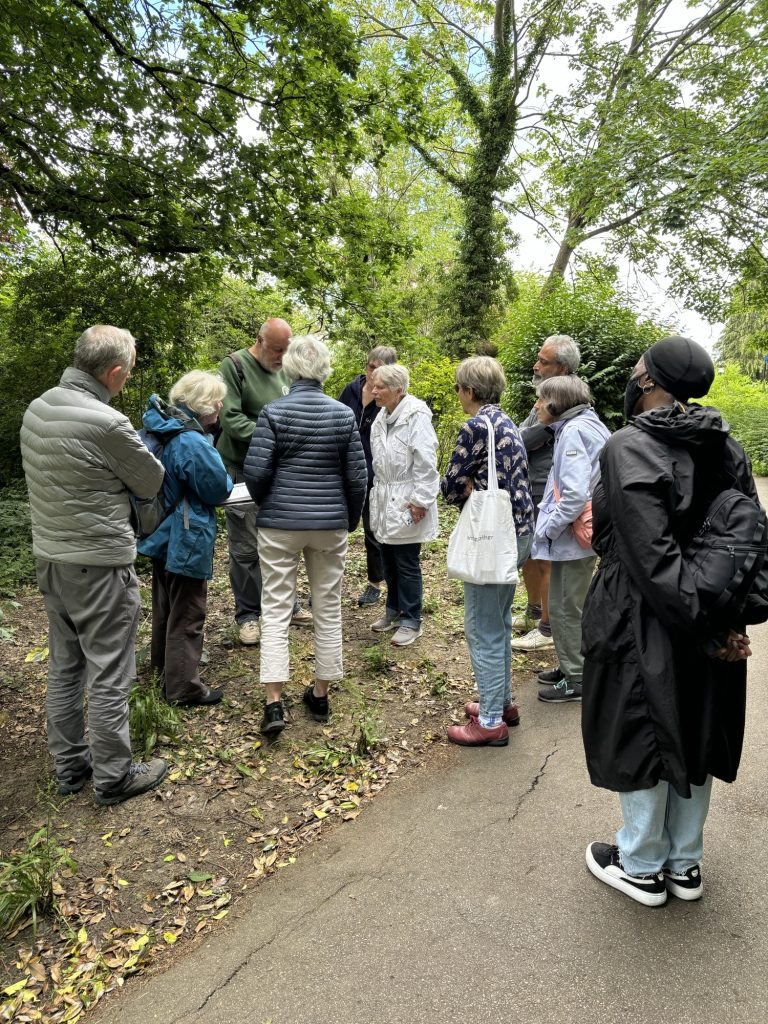
In June 2024 we held a walk and talk event led by dendrologist John Wells who was able to help us identify and learn more about many of the trees growing in our park. Here are a few notes from this very interesting event starting from the Northumberland Road entrance.
Two Cornelian Cherries/ Cherry Dogwood, situated in the left hand corner, near the fence, at the park entrance. This small, deciduous tree, native to eastern/southern Europe and s/w Asia, produces clusters of small, yellow, star-shaped flowers in late winter. These develop into elongated sour edible cherries – good for jam, rather than eating. Visitors will have noticed the sticky red stains and berries when the fruit falls on the path.
Walking down the path, there are some large conifers to the left, against the park fence. These are:
Western Red Cedar Pines (behind the Mahonia). These trees are not in good shape, having been planted too close and lack room for roots / sun. They like plenty of water and can grow to 65 ft tall. Western red cedar wood is aromatic and rot-resistant and is used for applications such as the construction of shingles and siding. These trees can be identified by their foliage, which forms flat sprays with scale-like leaves in opposite pairs, with successive pairs at 90 degrees to each other – an entirely difference appearance to conifers (pine trees). This tree is actually part of the juniper family and is native to n/e USA. They produce small, blue-grey cones that cedar waxwings and other backyard birds love, as well as offering shelter and habitat.
English Oak, a large tree leaning over the stream, with a long branch inclining over an adjacent house (reported to the Council). There are two native species of oak in the UK, the English Oak and the Sessile Oak, both part of the Quercus genus, which is in the Beech family. There are more than 600 species of oak worldwide. Oaks – Tree Guide UK – Oak tree identification
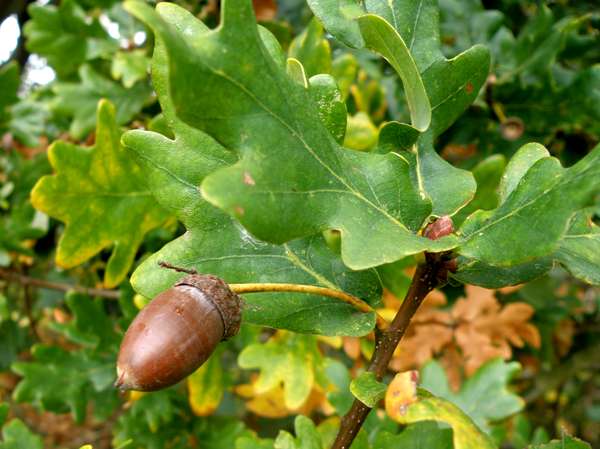
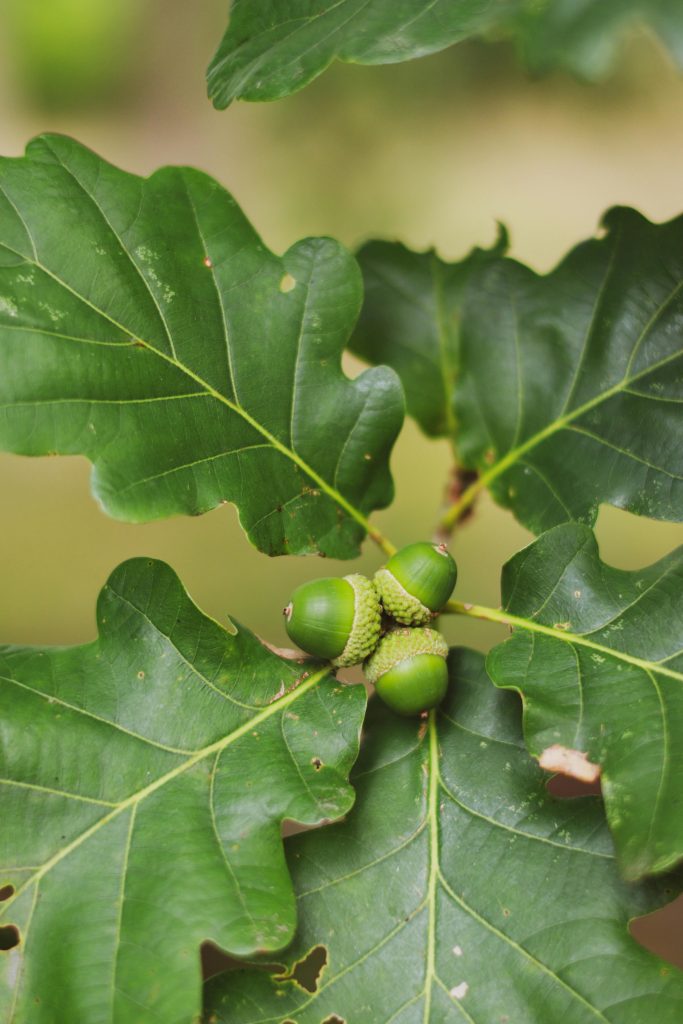
American red gum (Liquidambar styraciflua)
This tree produces dramatic autumnal colour, with glossy, maple-like, 5 to 7-lobed leaves which turn to shades of orange, crimson and purple in autumn. Sweet gum trees are native to North America, where they’re often found growing in swampy regions. A Spanish naturalist ‘discovered’ sweet gum trees in the early 16th century and described their aromatic gum which exudes from the tree as ‘liquid amber’ – hence the Latin name, Liquidambar styraciflua. It’s not a tree for a conventional back garden, needing plenty of space to do it justice.
The Willows
Crack Willow (Salix fragilis) willows are also a feature of the park with two planted at the main bridge. The Crack willow is scruffy and loud and gets its name from its tendency to develop cracks and fissures and the noise its trunk and branches make when they break. It is often planted alongside rivers and dykes to stabilise their banks, and is usually pollarded to allow light through to the water. It’s one of the largest willows and its leaves are popular with moth caterpillars.
Further along the path we reach the two large white willow trees, an iconic feature of the park. The scientific name for this tree, Salix babylonica, is something of a misnomer. Salix means “willow,” but babylonica came about by mistake. Carl Linnaeus, who designed the naming system for living things, believed weeping willows were the same willows found by the rivers of Babylon in the Bible, more likely to have been poplars. Weeping willow trees get their name from the way that rain resembles tears when it’s dripping off the curved branches.
Crack Willow (Salix fragilis) – British Trees – Woodland Trust
Cyprus Trees
The three large conifer-looking evergreen trees just before the Stone Bridge are cypresses. Most cypress trees belong to the Cupressus genus, with 22 currently accepted species worldwide, and some of these are called cedars. Cypress wood has been highly valued through the centuries, even though only a few species grow large enough to create commercially valuable lumber. Its longevity and resistance to rot have made it a very sought-after material. Canoes and water pipes were some of the things people made with them hundreds of years ago.
Black Poplars
Further along the path and to the left are the stumps of several Black Poplars (Populus nigra) which had developed canker and were substantially pruned in a neighbouring garden last autumn. Poplars have dark rough bark and produces redish catkins. Our native black poplar has featured in Constable paintings, has provided medicinal treatment for pain and wounds and provided timber for floor boards for centuries, but is now in significant decline, largely due to the drainage of the land for agricultural which has made it difficult for these wetland trees. A recent survey estimated there are only 7000 black poplars in England, Wales and Ireland, of which 600 are female. The species is dioecious (male and female flowers are on different plants), with flowers and catkins. A species of cottonwood, it releases a white, fluffy seed tufts which blow around the park. Pollination is achieved by the wind.
Black poplar | The Wildlife Trusts
Park visitors may also observe ivy growing up the trunks of trees. This does not damage the tree and its autumn nectar provides both food for butterflies and habitat for birds and insects.
There is also a large amount of garlic mustard growing in the park – a key important food source for the orange-tip and green-veined-white butterflies.
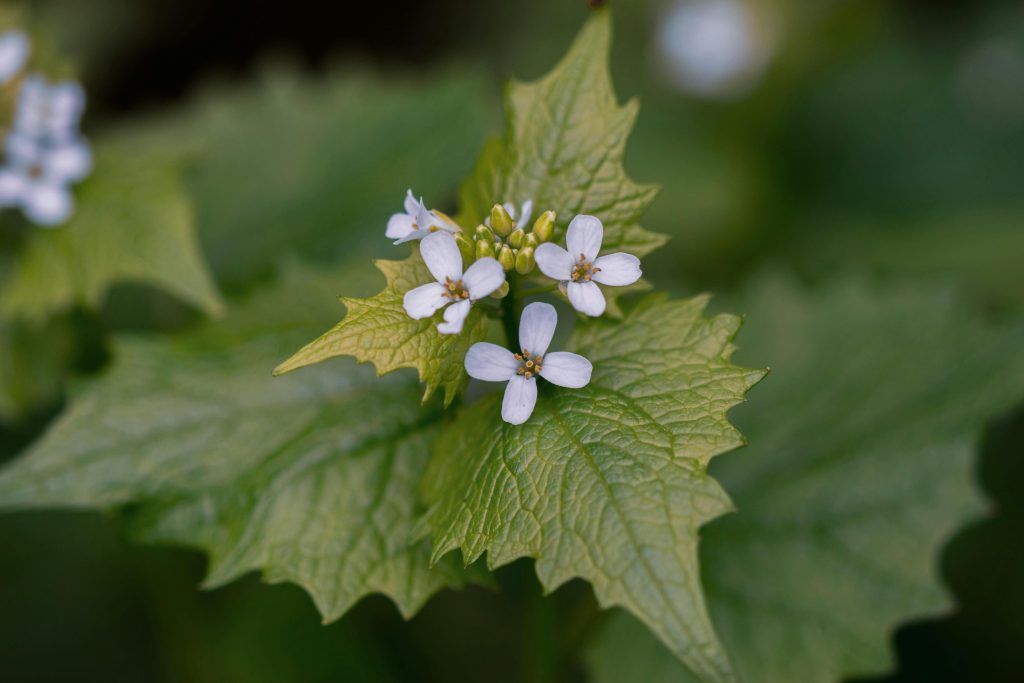
There is a range of grasses growing in the park, as well as somewhat of an invasion of dock – encouraged by late mowing after the plant has seeded. True grasses have hollow stems, sedge stems are solid and rushes are hollow and without nodules (divisions).
Locust tree (Robinia pseudoacacia)
The next tree of interest is the locust tree – the black, or false, acacia a member of the pea family. It has a deeply furrowed rough bark, dark green pinnately compound leaves and drooping clusters of fragrant white blossom in spring, followed by oblong seed pods. It sends out suckering shoots from the base, which can be invasive but compensates with a glorious yellow-orange leaf display in autumn. Robinia pseudoacacia – Wikipedia.
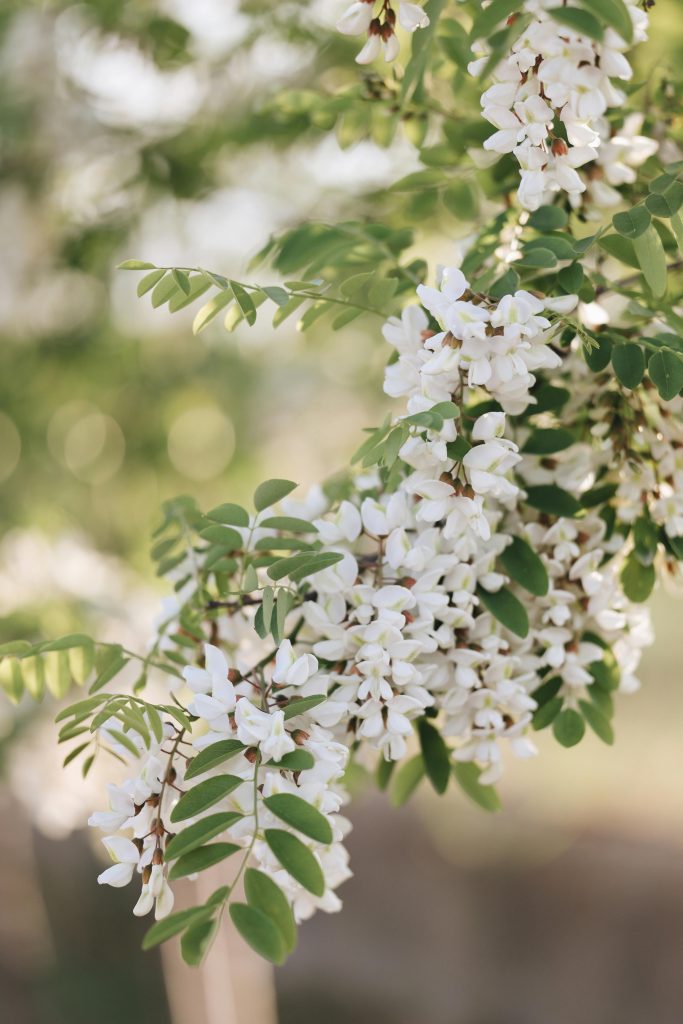
Later on, it was widely used to make roofing shingles, railroad ties, ladders, fence posts, furniture, and siding. Today, certain cypress species are still harvested for lumber, although about 47% of this slow-growing family is chipped and sold as mulch. Cyprus trees are beneficial for wildlife. Their dense foliage provides shelter for small nesting birds when many broadleaved deciduous trees are still in bud.
25 Types of Cypress Trees (Pictures and Identification) (ownyardlife.com)
Alders (Alnus incana Aurea)
Five of these ‘golden alders’ were planted by the FoYW near Rayners Lane, following a funding award from the Mayor of London. Young shoots emerge golden yellow in spring, contrasting with the vivid pink catkins. Alders grow best in moist soil and full sun. These trees are excellent in soaking up water in a water-logged section of the park. Alder trees support a wider range of wildlife, including the spectacular yellow-and-black-striped caterpillar of the alder moth (Acronicta alni). Its catkins provide nectar and pollen for bees, and the seeds are eaten by finches.
Complete Guide to Alder Trees | BBC Gardeners World Magazine
